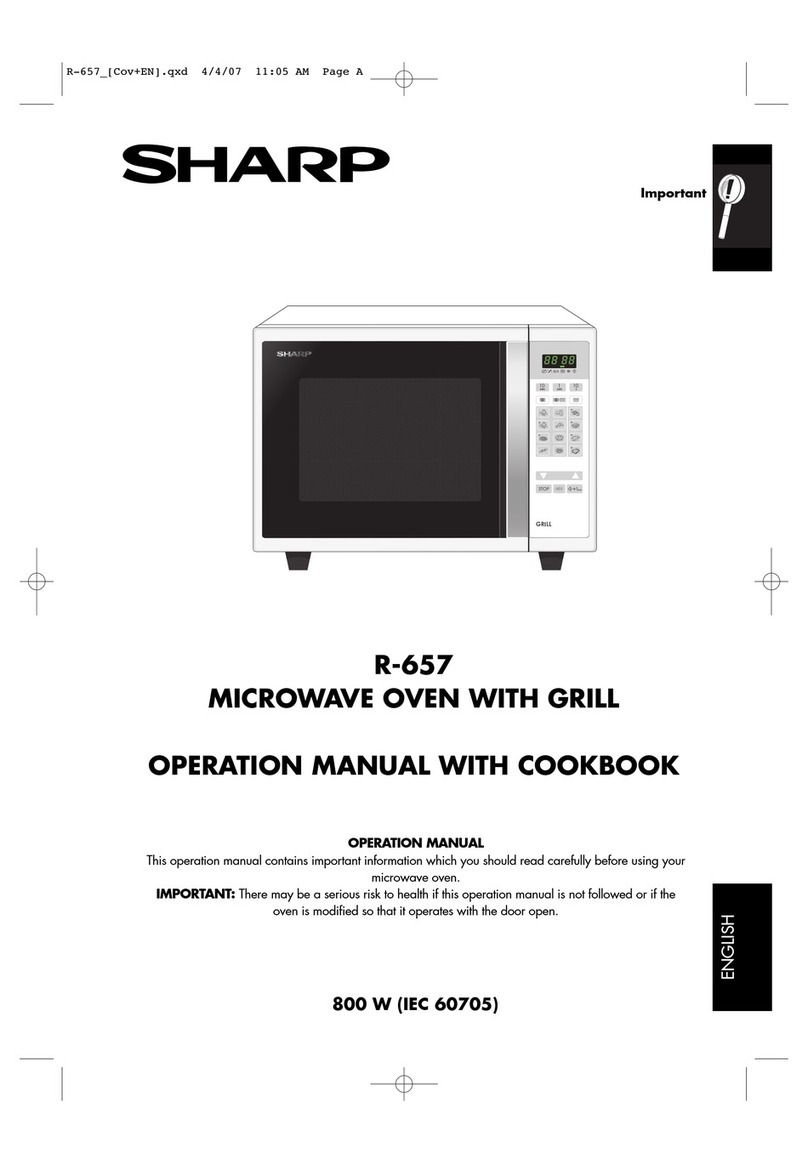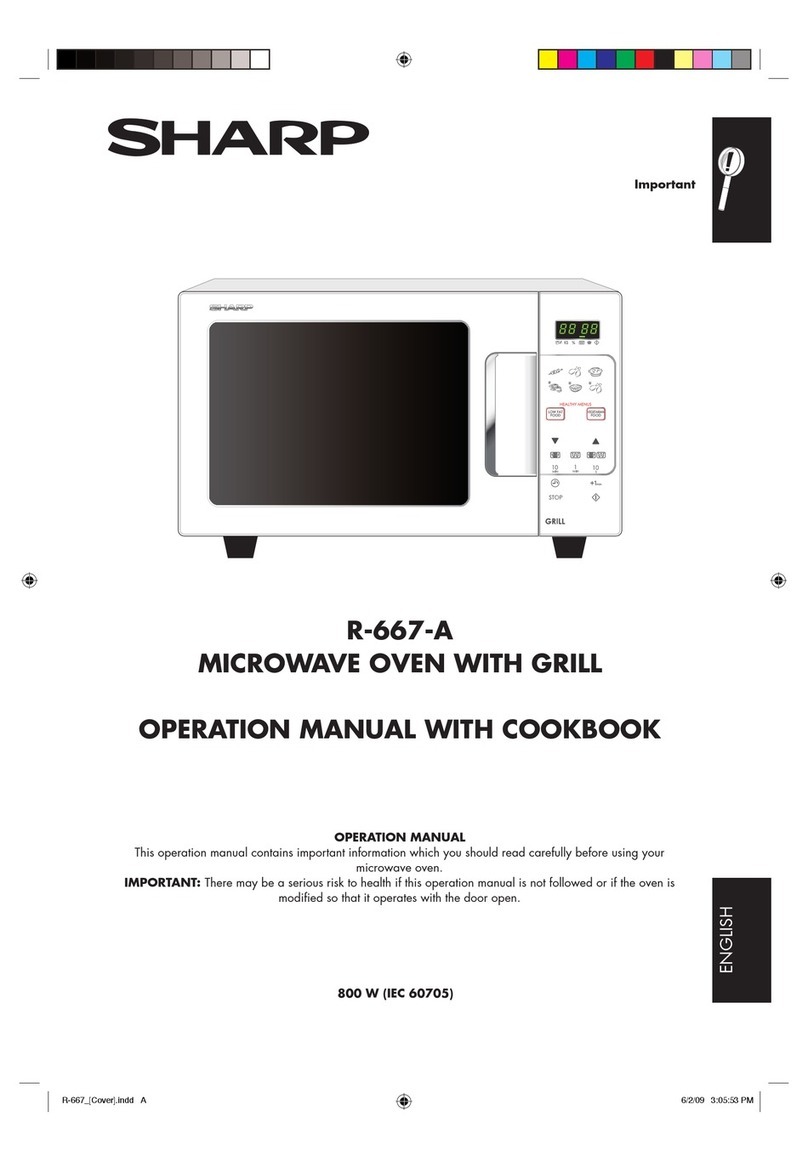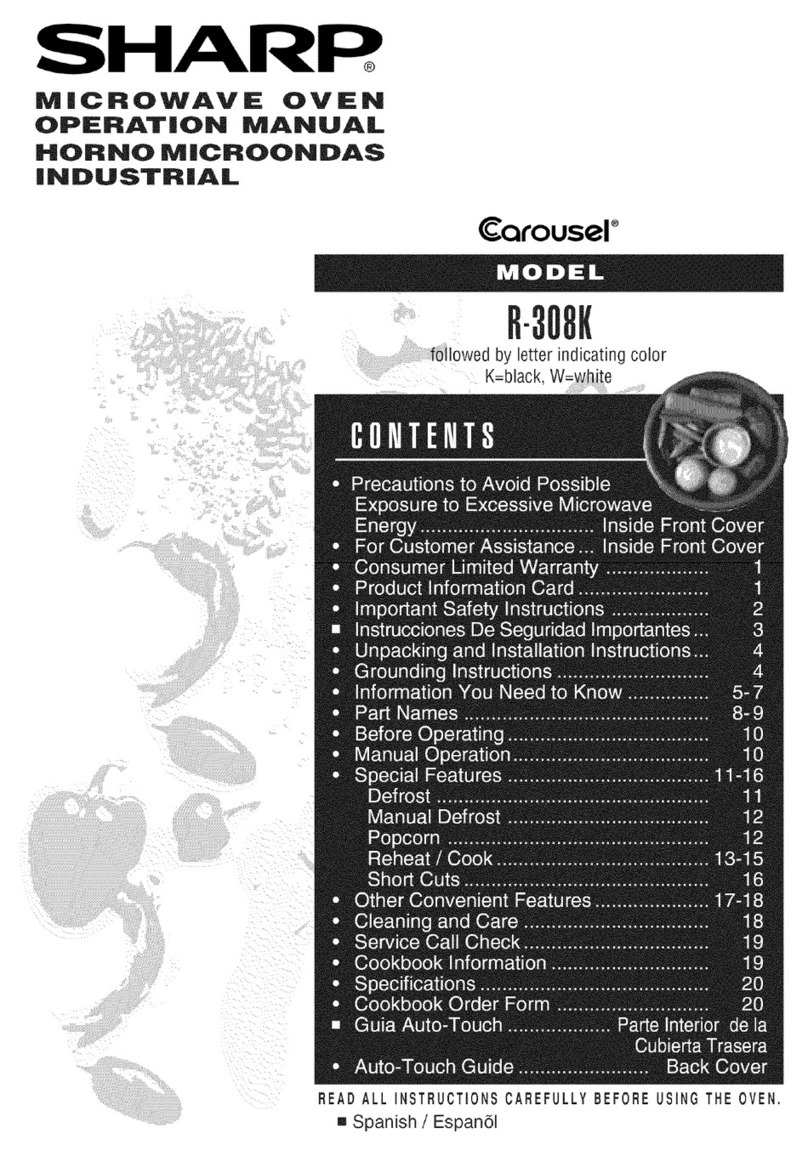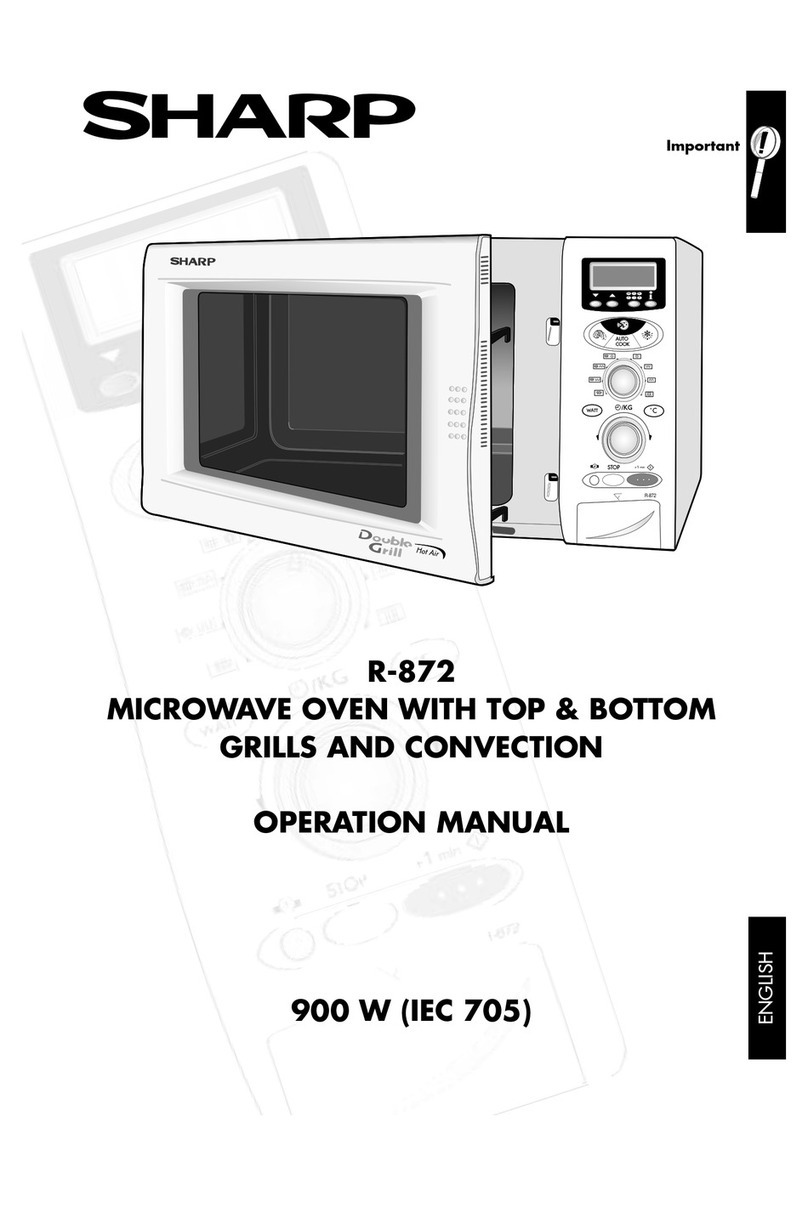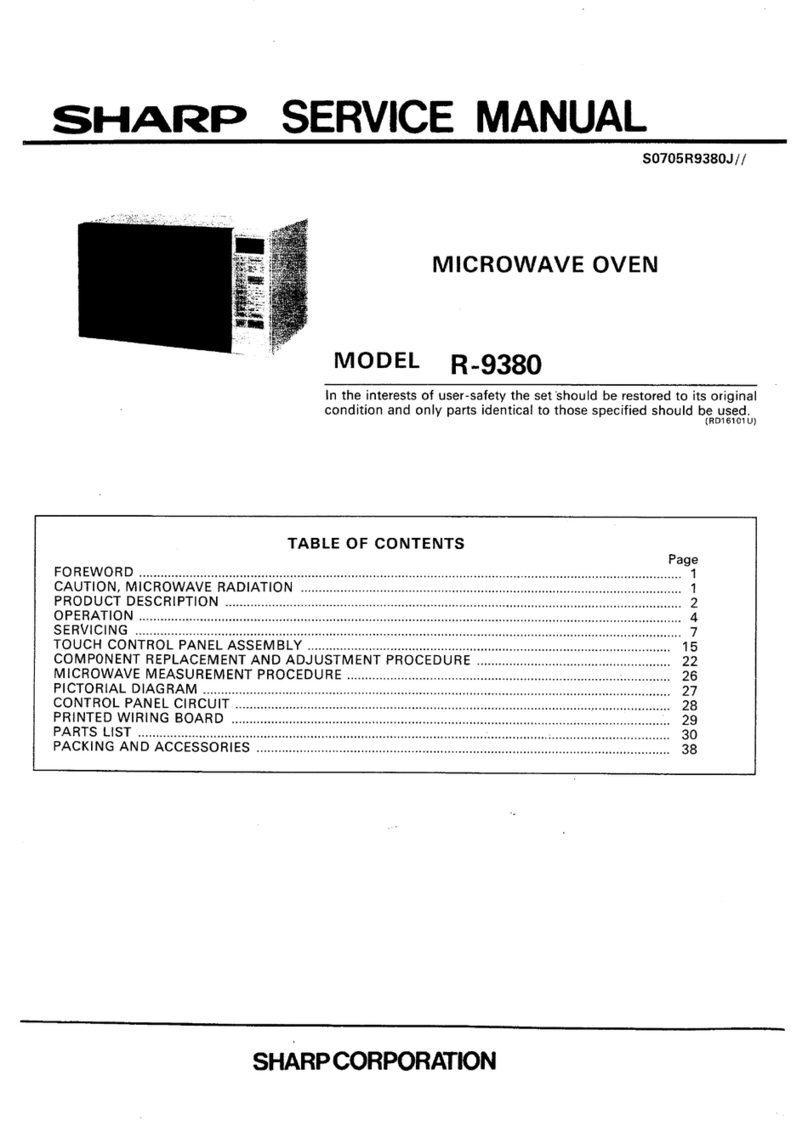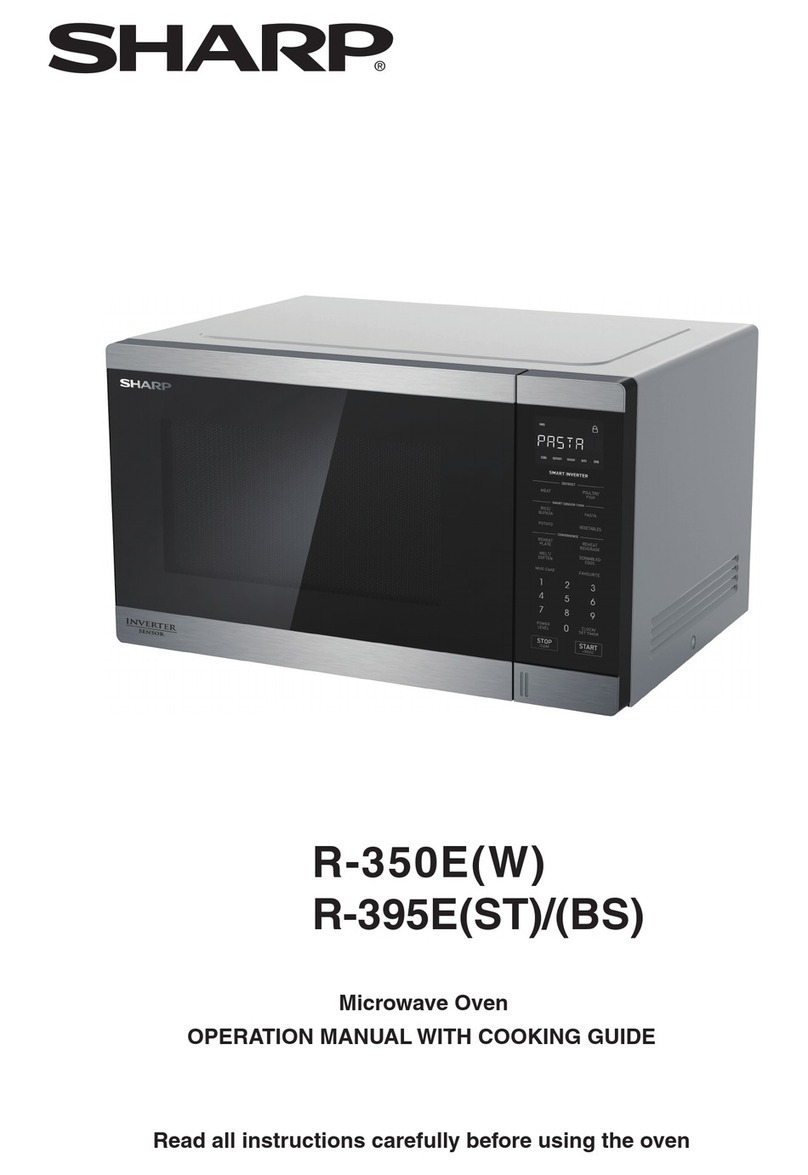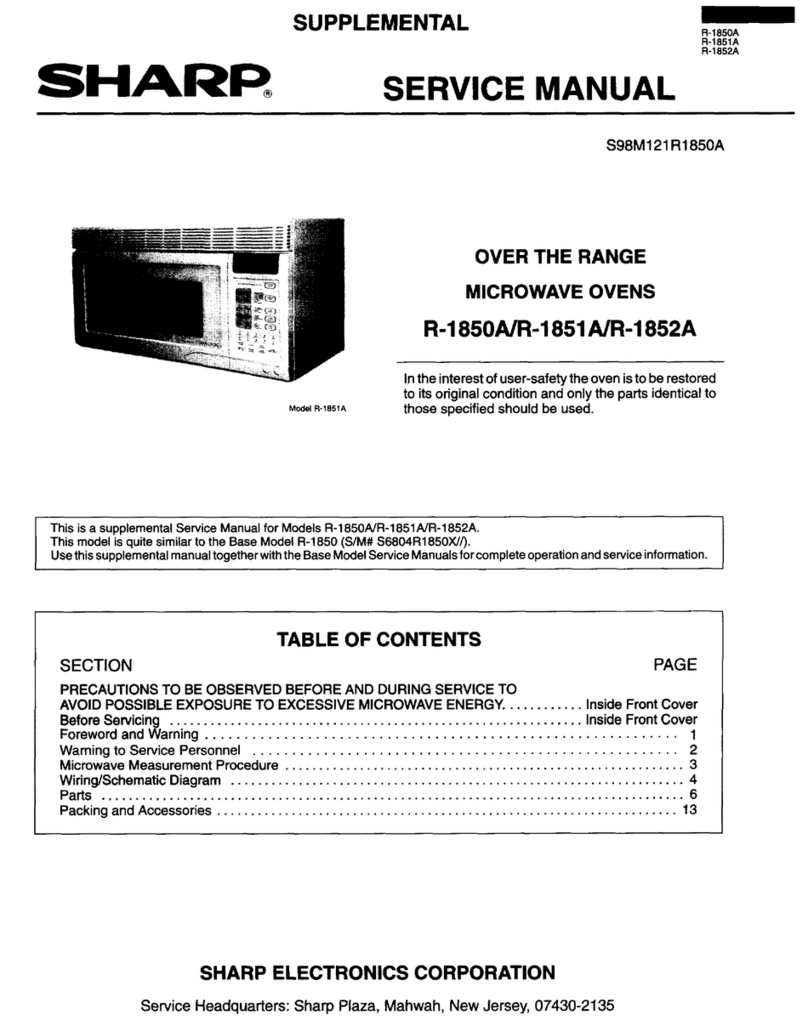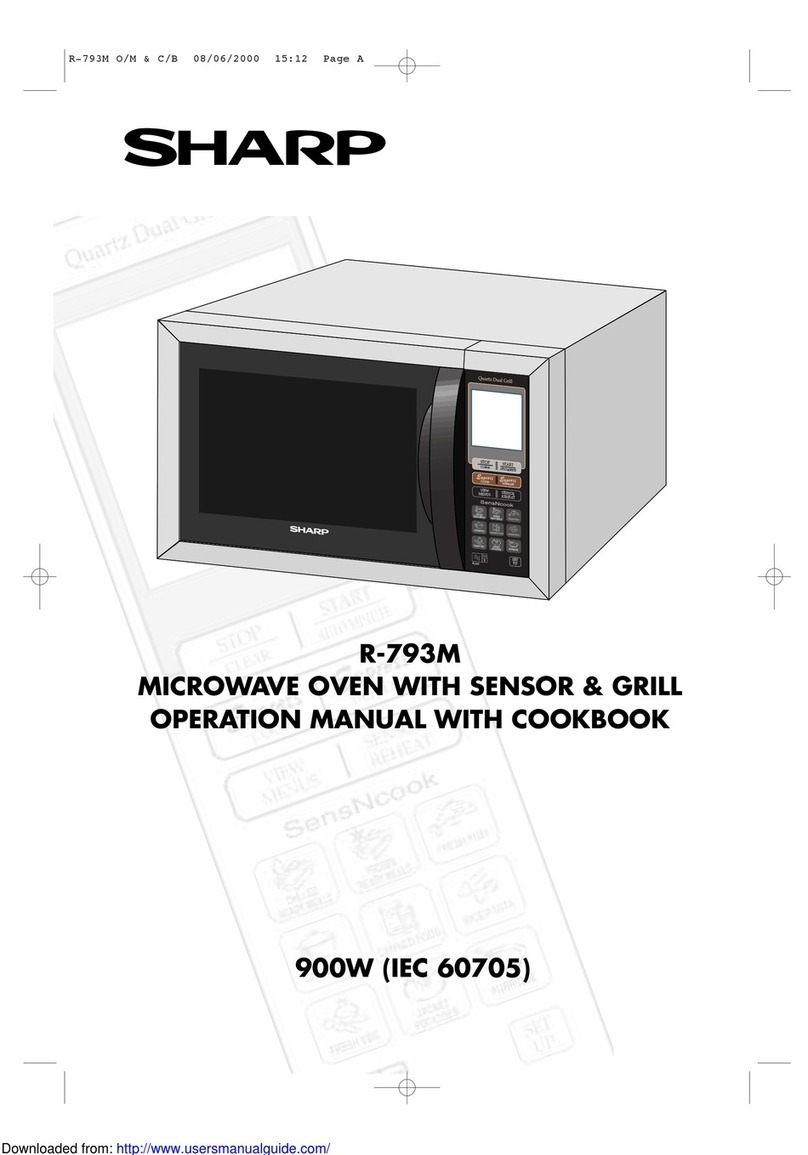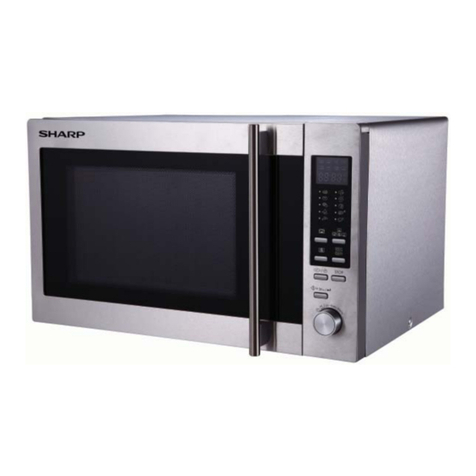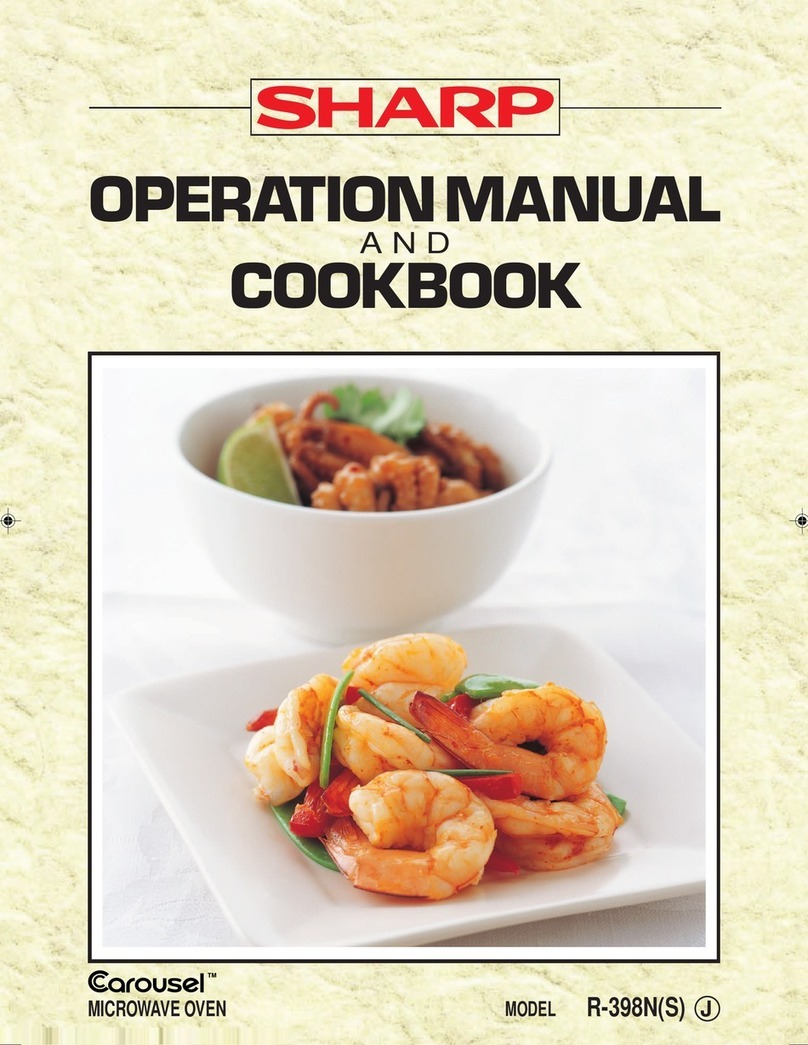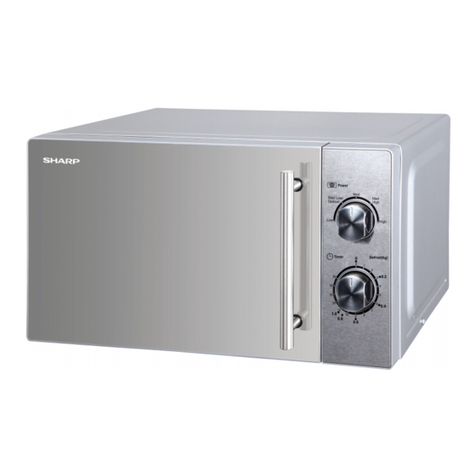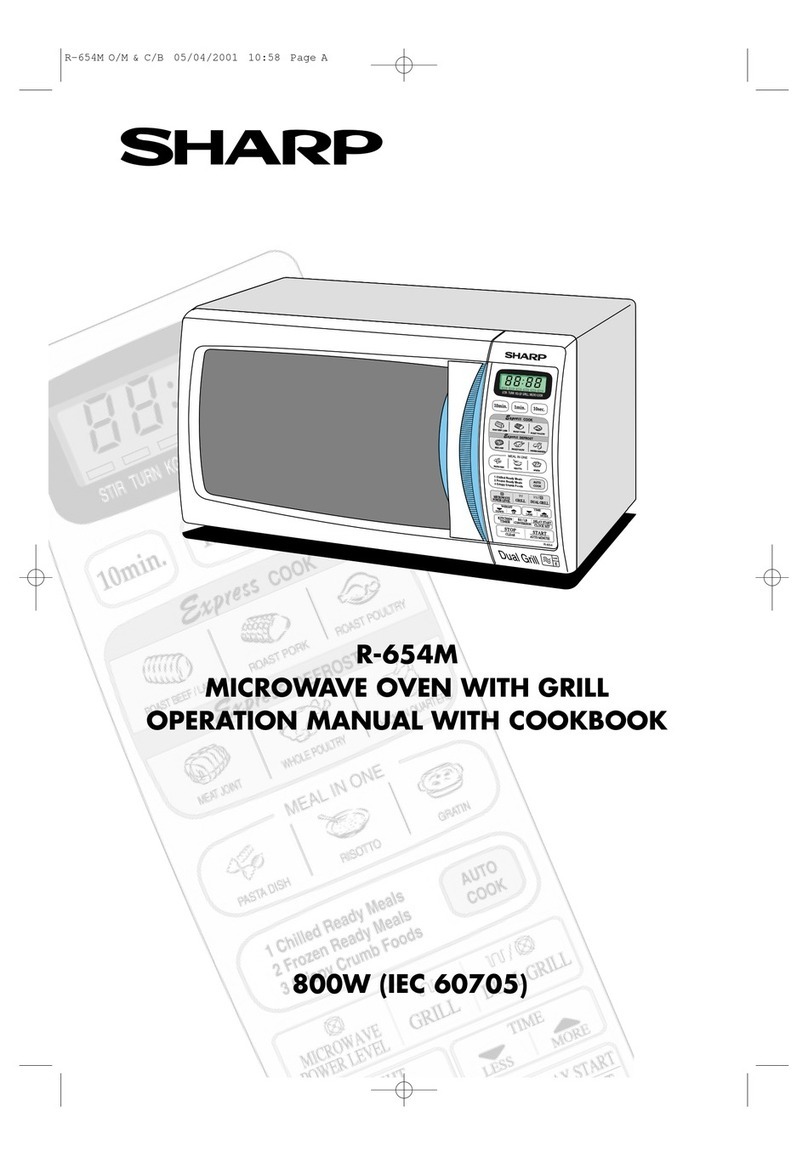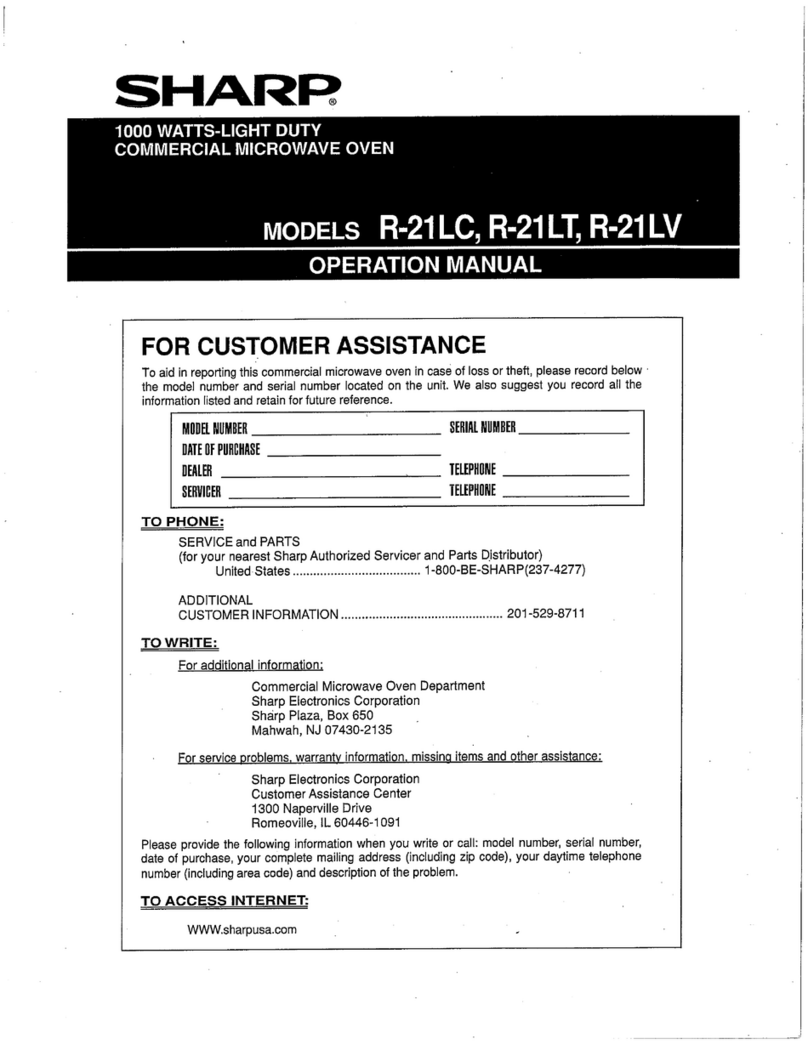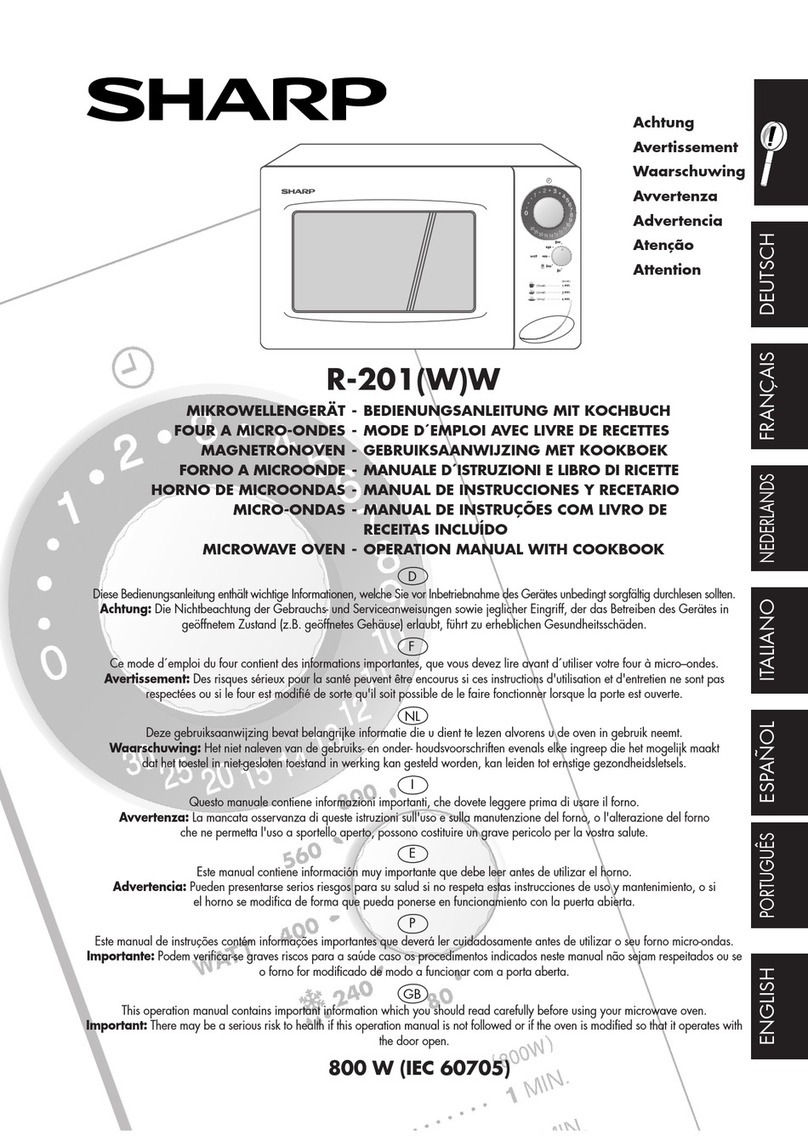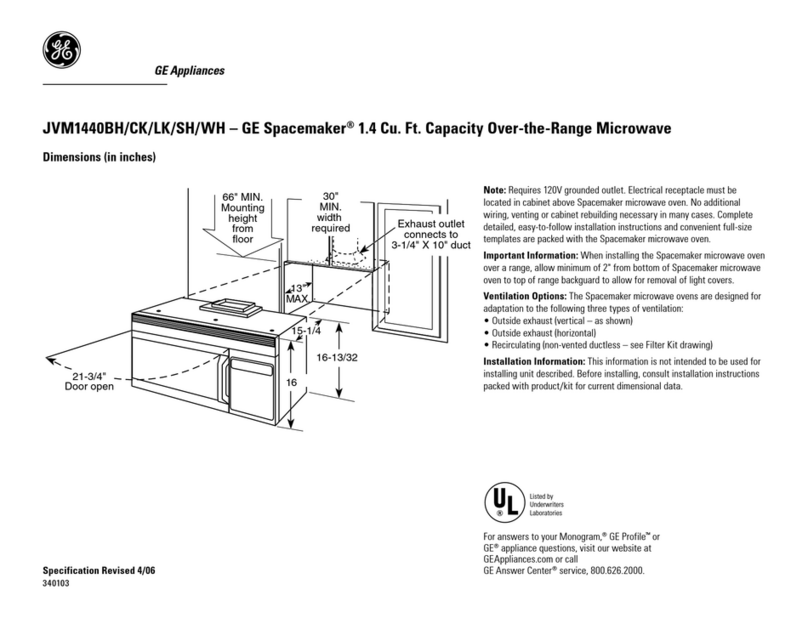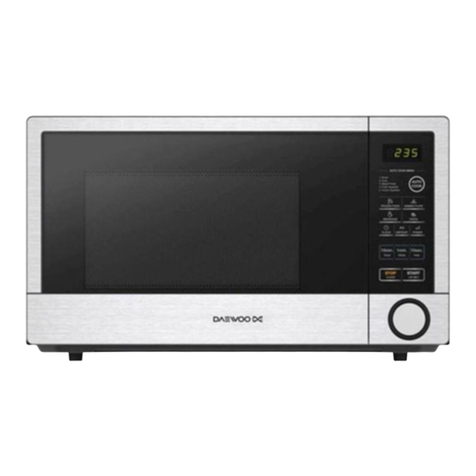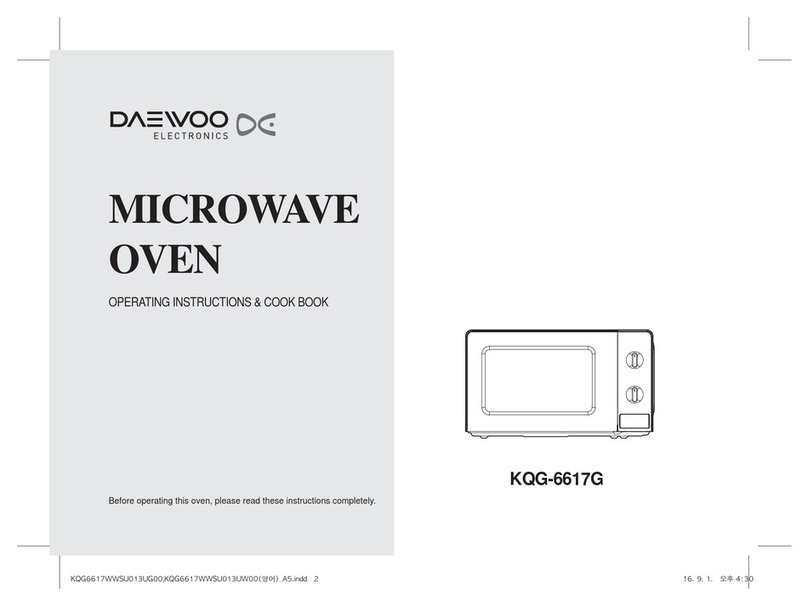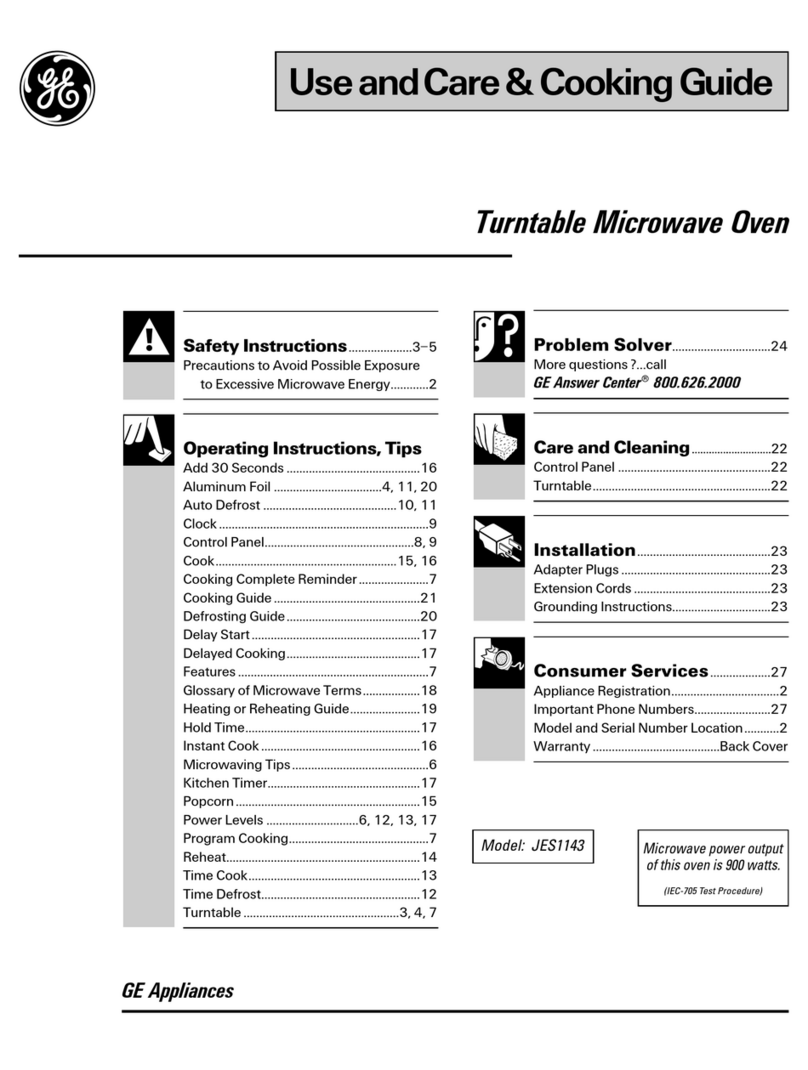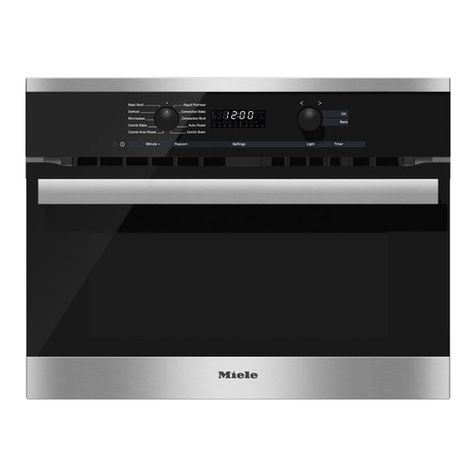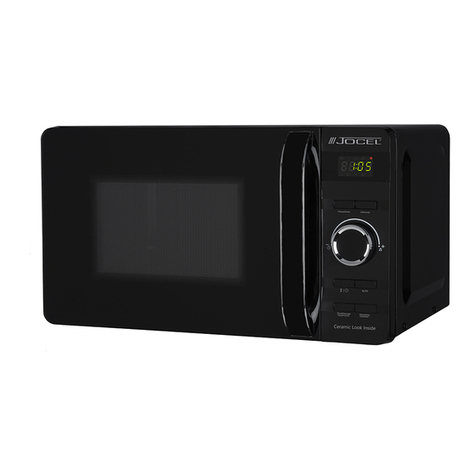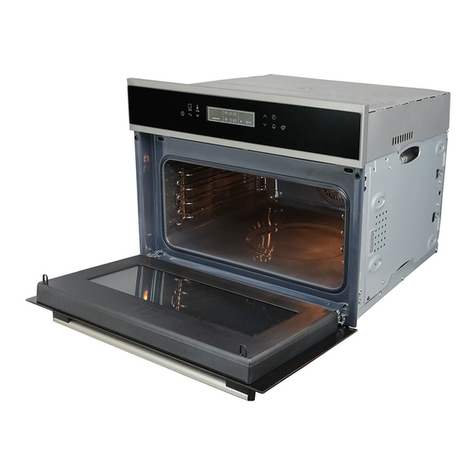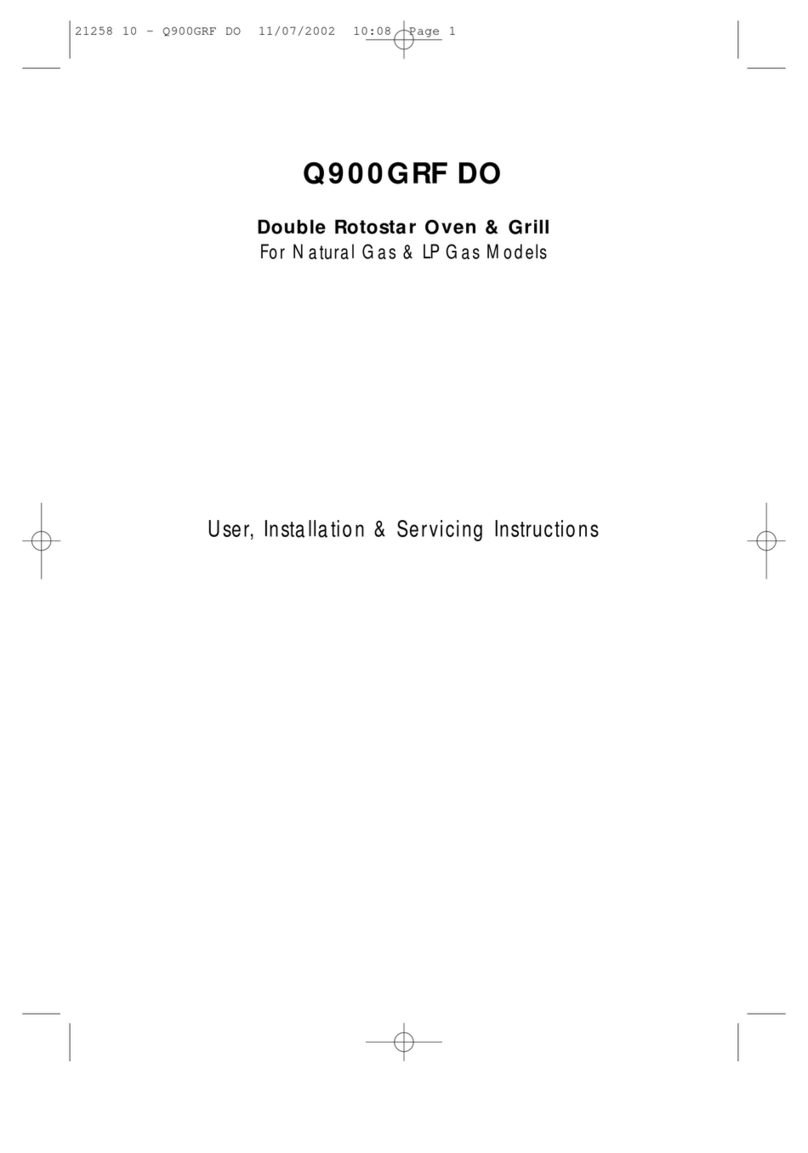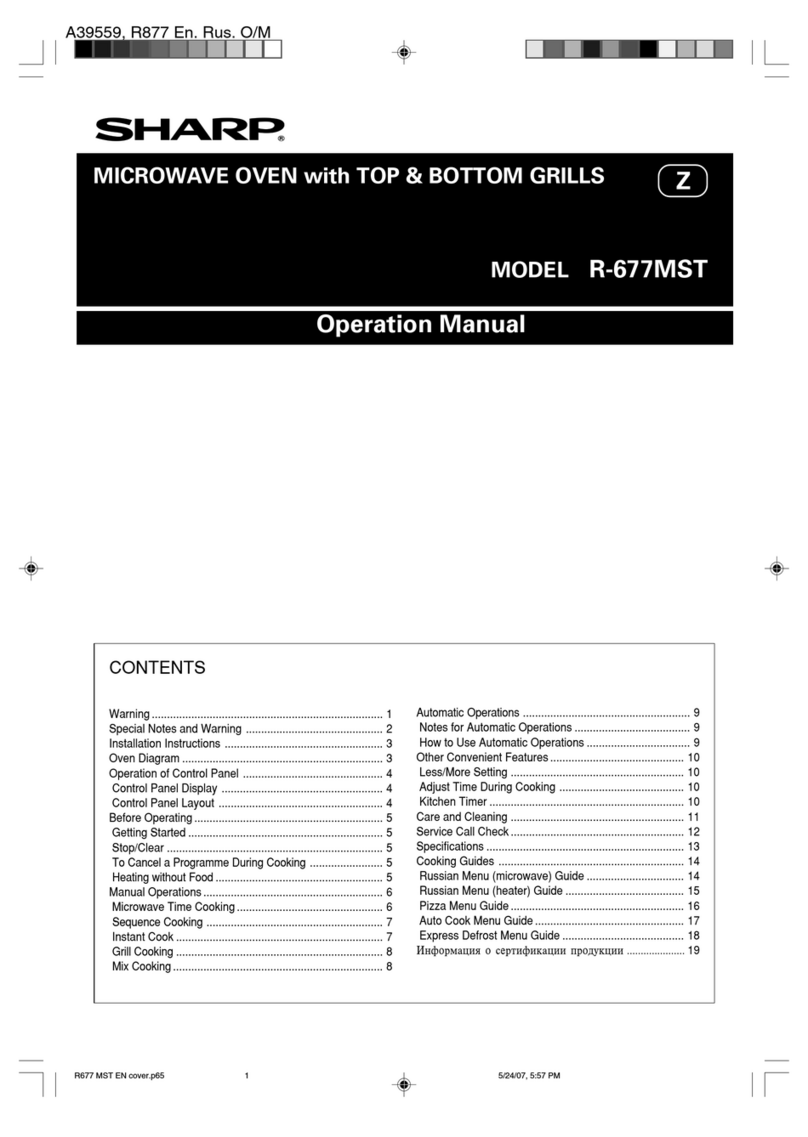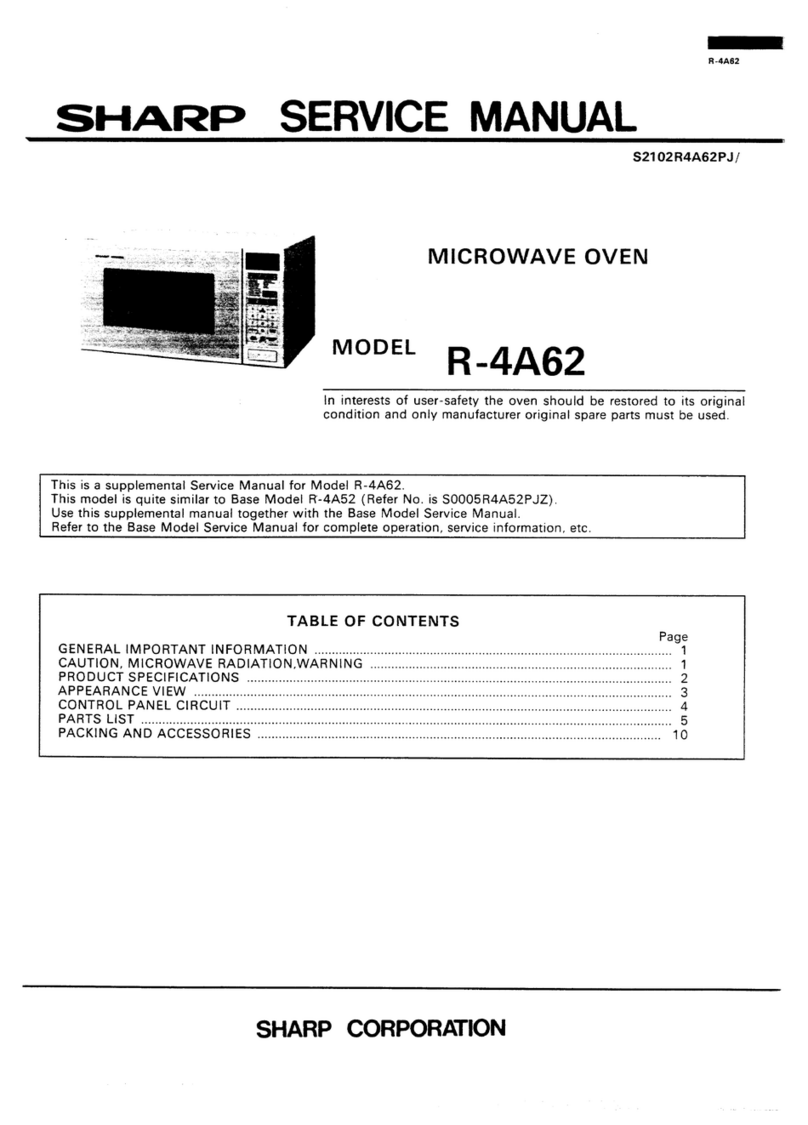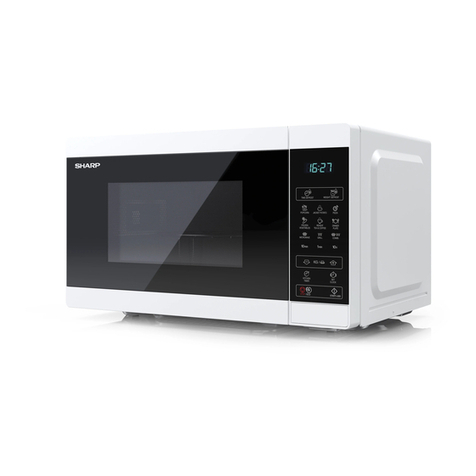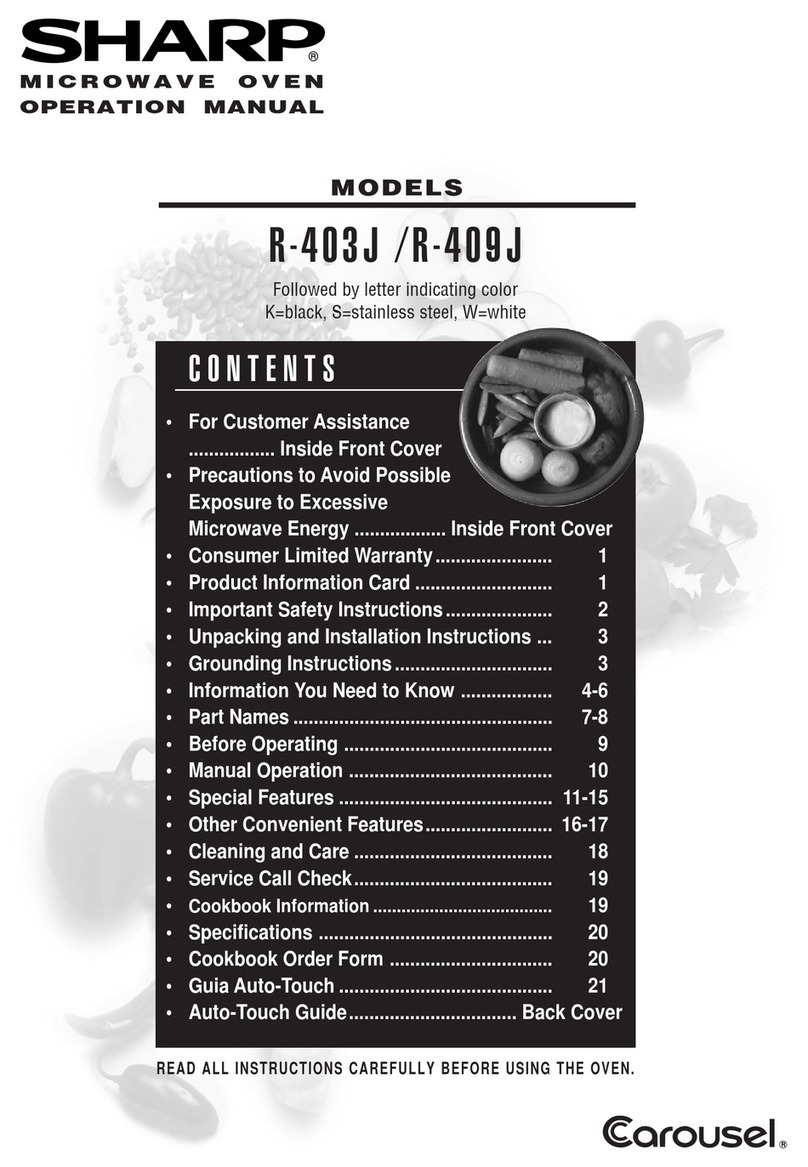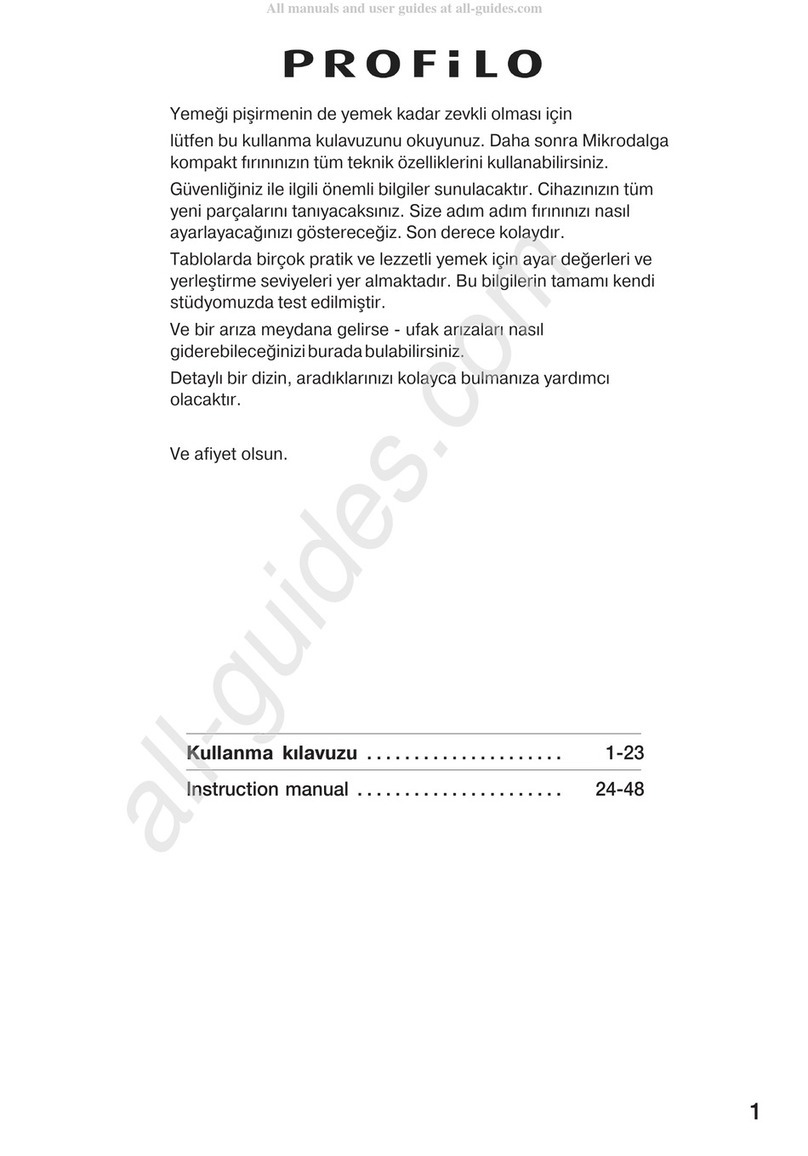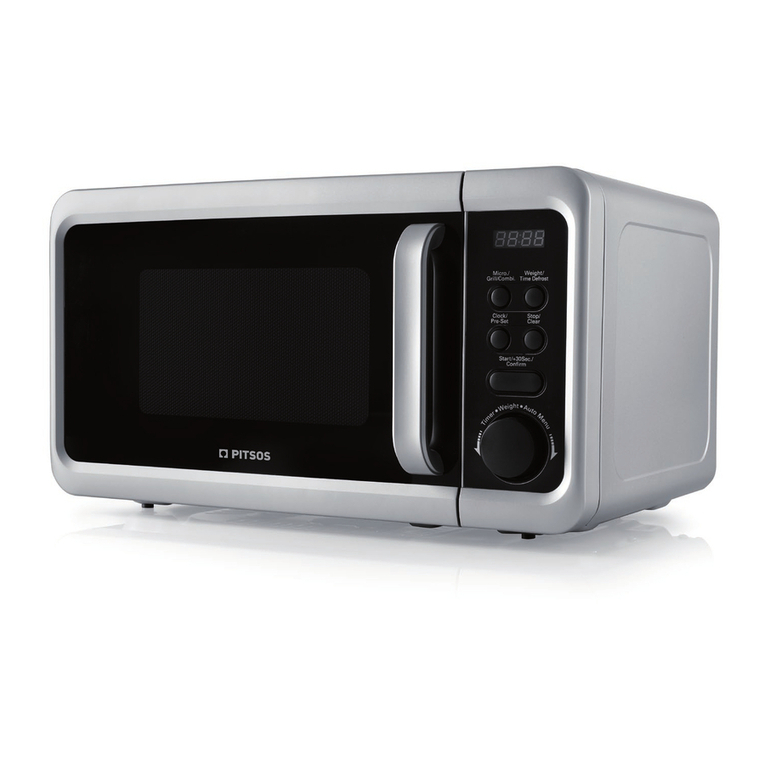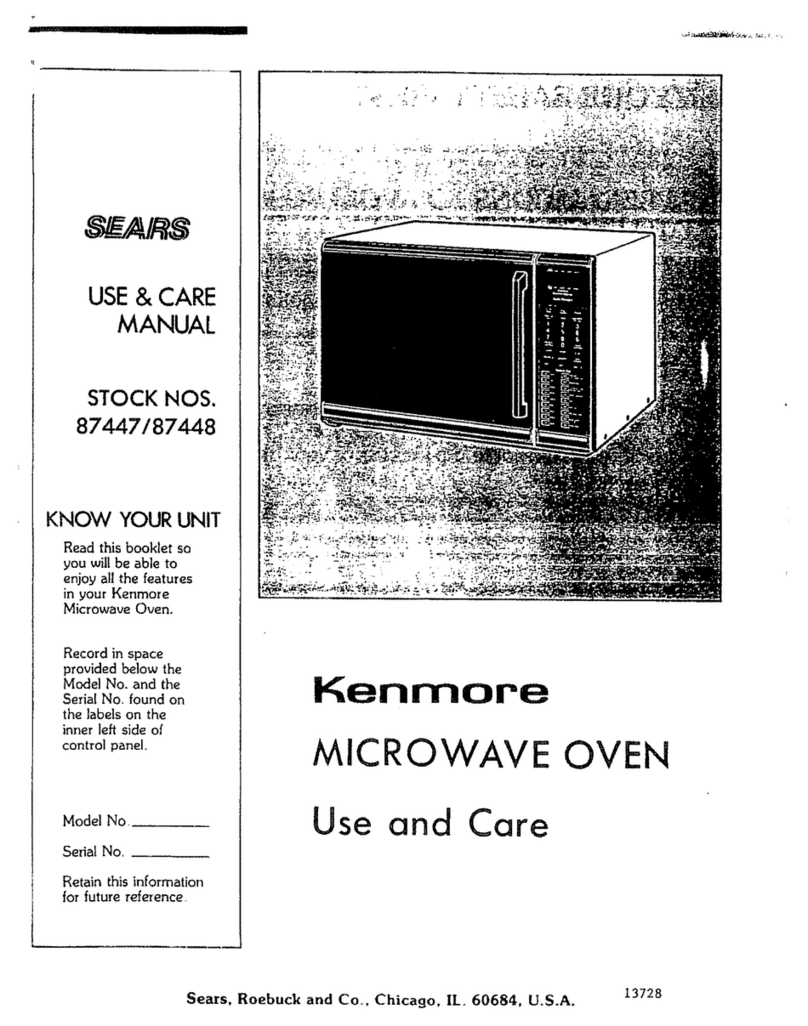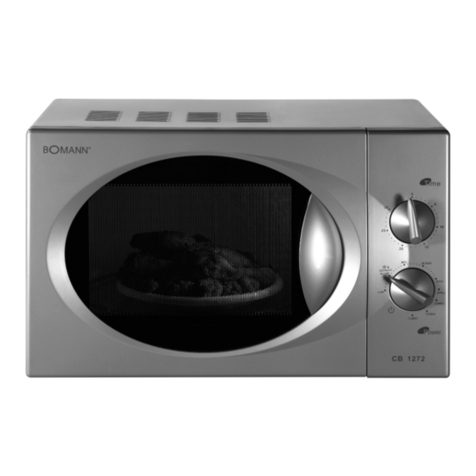7
R-930AK
R-930AW
CONVECTION COOKING CONDITION
PREHEATING CONDITION
Program desired convection temperature by touching the
CONVECTION pad and the Temperature pad.
When the START pad is touched, the following operations
occur:
1. The coil of shut-off relays (RY1, RY3,RY5 and RY6) are
energized, the oven lamp, cooling fan motor, turntable
motor and convection motor are turned on.
2. The coil of relay (RY4) is energized by the control unit.
Thedamperismovedtotheclosedposition,openingthe
damper switch contacts. The opening of the damper
switch contacts sends a signal to the LSI on the control
unit de-energizing the relay (RY4) and opening the
circuit to the damper motor.
3. Thecoilofheaterrelay(RY3)isenergizedbythecontrol
unitandthemainsupplyvoltageisappliedtotheheating
element.
4. Whentheoventemperaturereachestheselectedpreheat
temperature, the following operations occur:
4-1 The heater relay is de-energized by the control unit
temperature circuit and thermistor, opening the
circuit to the heating element.
4-2. The oven will continue to function for 30 minutes,
turningtheheateronandoff,asneededtomaintain
the selected preheat temperature. The oven will
shut-down completely after 30 minutes
CONVECTION COOKING CONDITION
Whenthepreheattemperatureisreached,abeepsignalwill
sound indicating that the holding temperature has been
reached in the oven cavity. Open the door and place the
food to be cooked in the oven.
Touch the CONVEC pad first and then touch the Tempera-
turepad.Andprogramdesiredcookingtimebytouchingthe
Number pads.
When the START pad is touched, the following operations
occur:
1. Thenumbers onthe digitalread-out starttocount down
to zero.
2. The oven lamp, turntable motor, cooling fan motor and
convection motor are energized.
3. Heaterrelay(RY3)isenergized(ifthecavitytemperature
is lower than the selected temperature) and the main
supplyvoltageisappliedtotheheatingelementtoreturn
to the selected cooking temperature.
4. Uponcompletion ofthecooking time,the audiblesignal
will sound, and oven lamp, turntable motor, cooling fan
motor and convection motor are de-energized. At the
end of the convection cycle, if the cavity air temperature
is above 275˚F, the circuit to RY6 will be maintained (by
thethermistorcircuit)tocontinueoperationofthecooling
fan motor until the temperature drops below 245˚F, at
which time the relay will be de-energized, turning off the
fanmotor. RelayRY5 willhowever, openassoon asthe
convection cycle has ended, turning off the convection
fan motor.
5. At the end of the convection cook cycle, shut-off relay
(RY4) is energized turning on the damper motor. The
damper is returned to the open position, closing the
damper switch contacts which send a signal to the
control unit, de-energizing shut-off relay (RY4).
AUTOMATIC MIX COOKING CONDITION
Touch the HIGH MIX/ROAST or the LOW MIX/BAKE pad
first.Andthenprogramdesiredcookingtimebytouchingthe
Numberpads.TheLOWMIX/BAKEpadispreprogrammed
for 350˚F with 10% microwave power, while the HIGH MIX/
ROAST pad is preprogrammed for 300˚F with 30% micro-
wavepower.WhentheSTARTpadistouched,thefollowing
operations occur:
1. The numbers on the digital read-out start to count down
to zero.
2. The shut-off relays (RY1,RY2,RY3,RY5 and RY6) are
energized, turning on the oven lamp, turntable motor,
cooling fan motor and convection fan motor.
3. The shut-off relay (RY4) is energized.
The damper door is closed from the open position.
4. The heater relay (RY3) is energized, applying the main
supply voltage to the heating element.
5. Now, the oven is in the convection cooking condition.
6. When the oven temperature reaches the selected
temperature, the following operations occur:
6-1. Thepowersupplyvoltageisalternatedtotheheating
element and power transformer.
6-2. The heating element operates through the heater
relay (RY3) contacts and the power transformer
operates through the primary interlock relay (RY2)
contacts.
6-3. These are operated by the control unit to supply
alternatelywithina32secondtimebase,convection
heat and microwave energy.
The relationship between the convection and microwave
power operations are as follows.
Note: The ON and OFF time ratio does not correspond
with the percentage of microwave power, because
approx. 2 seconds are needed for heating of the
magnetron filament.
12 SEC. 20 SEC.
32 SEC.
LOW MIX
BAKE
HIGH MIX
ROAST
MICROWAVE POWER
= APPROX. 30%
CONVECTION
TEMPERATUE
= 300˚F
MICROWAVE POWER
= APPROX. 10%
CONVECTION
TEMPERATUE
= 350˚F (180˚C)
26 SEC.6 SEC.
ON
ON
OFF
OFF
OFF
ON
(MICRO.)
(CONVEC.)
(MICRO.)
(CONVEC.)
Note: During alternate Microwave/Convection operation,
the convection heater is energized only if the cavity
temperature drops below the set temperature.
SENSOR COOKING CONDITION
Using the SENSOR COOK function, the foods are cooked
withoutfiguringtime,powerlevelorquantity.Whentheoven
senses enough steam from the food, it relays the informa-
tiontoits microprocessorwhichwillcalculate theremaining
cooking time and power level needed for best results.
When the food is cooked, water vapor is developed.
